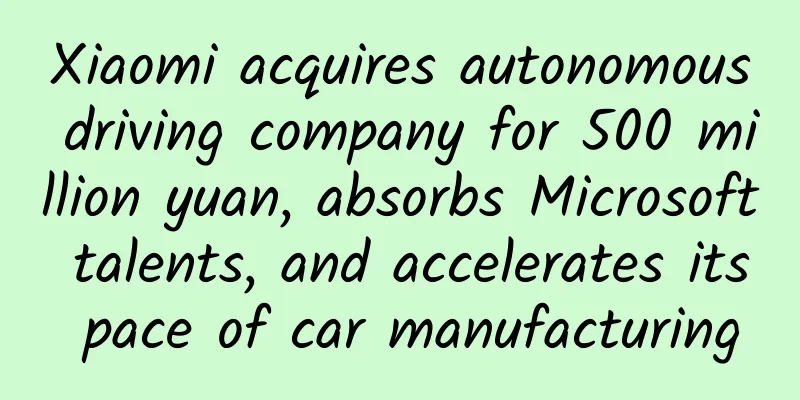With Huawei and Xiaomi in front and OV and Meizu behind, how long can Liu Zuohu's OnePlus last?

|
Recently, OnePlus released this year's flagship phone 5. Although the Snapdragon 835, 8GB of large memory, rear dual cameras and iPhone-like appearance did not make a big splash among Chinese consumers, many media outlets pointed out that it was suspected of plagiarizing the iPhone 7 Plus. The authoritative American technology media TheVerge called it "the me-too phone" in the title of its review of the OnePlus 5, directly firing a shot. The final price of the Chinese version of this OnePlus 5 starts at 2,999 yuan, which is 300 yuan higher than the price of the previous generation OnePlus 3T. Among models of the same price, the overall configuration is relatively leading. However, as the overall smartphone industry is becoming more and more concentrated towards big brand leaders, OnePlus, which has not been able to rank among the top in both the domestic and foreign markets, is under increasing competitive pressure. Even if the product configuration and cost performance are good, the market prospects are still grim. OnePlus's strategic problems Whether in terms of product strategy or marketing layout, the measures currently adopted by OnePlus are lagging behind. Before the product was released, OnePlus CEO Liu Zuohu accepted an interview with the media. Regarding the issue of OnePlus's future development strategy planning, Liu Zuohu emphasized that OnePlus's future strategy is to continue to do word-of-mouth marketing, focus on Android phones, and only make flagship products and only do online channels. When almost all mobile phone brands are increasing their R&D investment, increasing their investment in brand marketing, and expanding offline channels, OnePlus continues to maintain a follow-up strategy in products, continues to focus on word-of-mouth marketing in brands, and focuses on online layout in channels. Can it bring a good enough user experience and then feedback on its market growth? It can only be said that the market situation that OnePlus has to face is relatively severe. From the current launch of the OnePlus 5, it can be seen that in terms of products, OnePlus has until now adopted the strategy of following up with small innovations. It can be seen that this time, the OnePlus 5, in terms of product configuration, is already relatively good at present, but whether it is the media or users' impression of this phone, it still cannot get rid of the "plagiarism" mentioned above. From the product itself, we can find various "predecessors", but only the configuration has been updated. Such "assembly upgrade" is obviously not sincere for users. Compared with Apple's strategic and relatively slow introduction of new features, the new models of OnePlus mobile phones with pure configuration updates are not enough to stimulate more users' demand for replacement. On the one hand, OnePlus is relatively weak in brand, and the more important reason is that the lack of innovation of the product itself has slowed down the frequency of mobile phone consumers changing their phones. According to a survey by investment company Cowen & Co., more than 40% of the iPhones currently used on the market have been used for more than two years, reaching a historical high. OnePlus mobile phones are relatively weak in brand, which is a problem that has always existed. This is related to OnePlus's previous strategy of focusing on overseas markets. Liu Zuohu frankly revealed that the proportion of OnePlus mobile phone shipments in China and abroad is about 3:7. In China, OnePlus has a relatively small audience, and its popularity is not even as good as Hammer and Gionee. In the case of insufficient brand education among users in the domestic market, OnePlus is still insisting on the route of "word-of-mouth marketing". However, the mobile phone category is quite special, and it is not possible to drive the market by word of mouth. For mobile phone users, brand is a very important decision-making factor when choosing a mobile phone. The reputation of "good to use" alone is not enough to support enough consumer conversion. In terms of marketing layout, OnePlus's mobile phones will continue to focus on online channels in the future. However, little do people know that in the new retail era of online and offline integration, the physical sight and perception that can be brought by offline has become a very important part of the user consumption process, especially for the user market in third-tier and lower-tier cities, offline channels are even more important. In recent years, Xiaomi and Huawei have laid out offline experience stores and offline channels, without missing a single one. However, OnePlus has no offline layout, which may lead to competitors' comprehensive outflanking offline and occupying the minds of its target consumer groups first. Moreover, popular offline physical stores can become a powerful channel for providing after-sales service and effectively improve the user experience. Compared with OnePlus, which is only sold online, the mobile phone needs to go through a long and complicated process such as customer service contact, mailing, and waiting when it breaks down. Competing brands can directly go to offline physical stores to receive real-time after-sales service, which will undoubtedly widen the gap between users' perception of brands and services. Huawei and Xiaomi in front, OV and Meizu in the back. Now let's look at the overseas market that OnePlus focuses on. It is currently surrounded by competitors. Huawei, Xiaomi, OV and Meizu have invested a lot of resources in overseas markets. OnePlus, which has taken a step ahead in overseas markets, will undoubtedly be squeezed in the market. Take India, where OnePlus has done the best in overseas markets, for example. The price of mobile phones is basically around 3,500 yuan to 3,600 yuan, which is more expensive than other domestic mobile phones in the Indian market. According to OnePlus' internal research data, 60% of OnePlus users in India have a master's degree or above. Obviously, OnePlus' brand recognition and overall user level in India are relatively high. However, Huawei, Xiaomi and OV have entered the Indian market in the past two years, and the situation has begun to change greatly. According to the latest data from Counterpoint, among the top five smartphone sales in the Indian market in the fourth quarter of last year, Chinese brands occupied four seats. These four brands are vivo, Xiaomi, Lenovo and OPPO, accounting for 54% of the entire Indian smartphone market share. You should know that in the fourth quarter of 2015, Chinese brands accounted for only 14% of the Indian market. In the Indian market, where it is doing best, OnePlus's shipments are not among the top five. In other markets, the market squeeze suffered by OnePlus is imaginable. According to data from the US research company IDC in February this year, Huawei ranked third in total sales in global mobile phone shipments in 2016, and OPPO and vivo, which ranked fourth and fifth, had global sales growth rates of more than 100%. OnePlus' shipments are classified as Others. Compared with the strong sales and growth of these brands, its performance in overseas markets is not outstanding. This year, the growth rate of the domestic mobile phone market is only 1%, and it will only grow by 1%-2% in the next three years. In the replacement market, users' replacement cycle has begun to become longer. With the end of the "replacement wave", the "ceiling" of the domestic market has initially appeared. OnePlus, which lacks brand awareness in the domestic market, actually has no competitive advantage in the replacement market where users are increasingly demanding. In the overseas markets where OnePlus has been working for a long time, OnePlus will also face continued attacks from strong domestic brands in the future. The output of mature models in supply chain and brand marketing from strong domestic mobile phone brands may continue to intensify the impact on OnePlus, which does not have a very strong foundation. As a winner of Toutiao's Qingyun Plan and Baijiahao's Bai+ Plan, the 2019 Baidu Digital Author of the Year, the Baijiahao's Most Popular Author in the Technology Field, the 2019 Sogou Technology and Culture Author, and the 2021 Baijiahao Quarterly Influential Creator, he has won many awards, including the 2013 Sohu Best Industry Media Person, the 2015 China New Media Entrepreneurship Competition Beijing Third Place, the 2015 Guangmang Experience Award, the 2015 China New Media Entrepreneurship Competition Finals Third Place, and the 2018 Baidu Dynamic Annual Powerful Celebrity. |
<<: In this "driverless" race, these are the five leaders
Recommend
After being banned for 3 years, WeChat’s important “feature” may return!
Recently, according to feedback from some iOS use...
Why do some people still believe in the "doomsday" rumors that are disproven every year?
Every year, the Internet is filled with all kinds...
How can dark clouds weighing millions of tons float in the sky? Is it that the law of gravity has failed?
This article is based on answering questions rais...
Back to the South, smart door lock "suicide" incident
If you ask who has the most profound understandin...
Today, to all the parents at home! Please share "A loving family"
Expert in this article: Yang Jing, PhD in Immunol...
Does the universe really have color? The true colors of space objects revealed
What are the true colors of the James Webb Space ...
2020 Changtou Academy Financial Management Full Training Course Video Baidu Cloud Download
2020 Changtou Academy Financial Management Full T...
The UV of e-commerce skyrocketed during Double 11. How can we write the most eye-catching entrance copy?
In 2009, Alibaba turned "Singles' Day&qu...
Hyundai builds hydrogen fuel cell car with a range of up to 800 kilometers. New energy vehicles will usher in new opportunities
Today, the automobile industry has gradually retu...
Global Economic Forum: Using GenAI to increase employment and improve labor productivity
Generative artificial intelligence (GenAI) has th...
Are synthetic diamonds inferior to natural diamonds? Diamonds are forever, and so are synthetic ones
Some people say that there are three commodities ...
How much does it cost to join the Urumqi beauty mini program? Urumqi Beauty Mini Program Franchise Price Inquiry
How much does it cost to join a beauty app in Uru...
How to promote marketing on Weibo? Take the industry's high-quality cases~
This article starts from social media marketing ,...
Does Tencent, which is late to the game, still have a chance in OTT?
In July this year, Tencent launched a major inter...
How to write the New Year copy for 2018?
It’s the end of the year, and everyone is startin...









